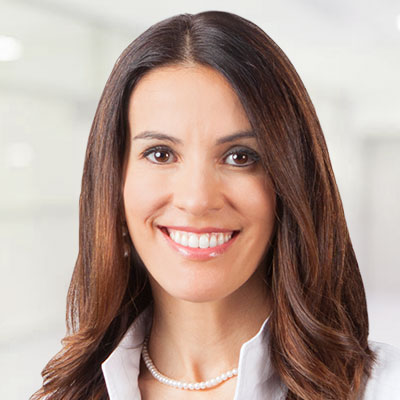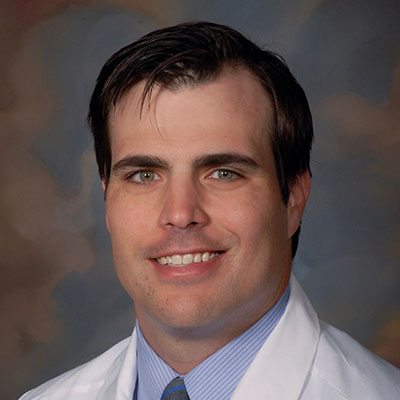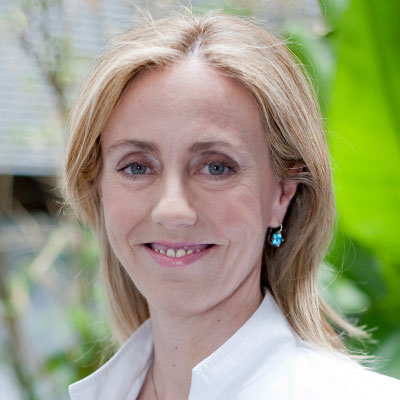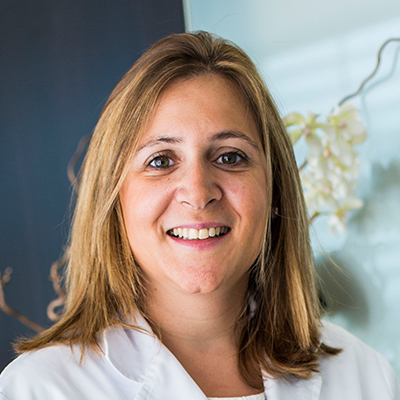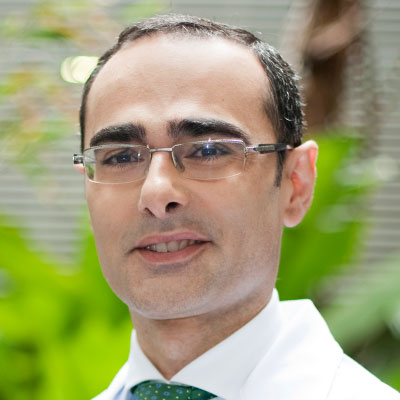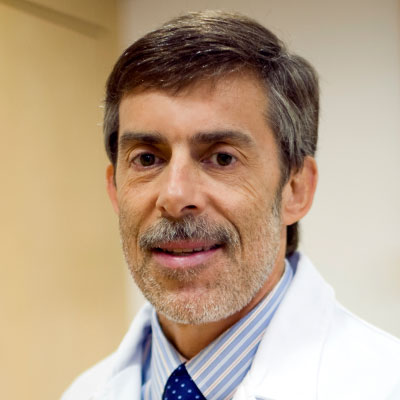Does Varicocele Repair Improve Conventional Semen Parameters? A Meta-Analytic Study of Before-After Data.
Cannarella R, Shah R, Hamoda TAA, Boitrelle F, Saleh R, Gul M, Rambhatla A, Kavoussi P, Toprak T, Harraz AM, Ko E, Çeker G, Durairajanayagam D, Alkahidi N, Kuroda S, Crafa A, Henkel R, Salvio G, Hazir B, Darbandi M, Bendayan M, Darbandi S, Falcone M, Garrido N et al
World J Mens Health. 2023 Jun 22. doi: 10.5534/wjmh.230034. Online ahead of print.. 2023
doi:
|
|
Living donor uterus transplant in the UK: A case report.
Jones BP, Vali S, Saso S, Devaney A, Bracewell-Milnes T, Nicopoullos J, Thum MY, Kaur B, Roufosse C, Stewart V, Bharwani N, Ogbemudia A, Barnardo M, Dimitrov P, Klucniks A, Katz R, Johannesson L, Diaz Garcia C, Udupa V, Friend P, Quiroga I, Smith JR
BJOG. 2023 Aug 22. doi: 10.1111/1471-0528.17639. Online ahead of print.. 2023
doi:
|
|
Association of hysterectomy and invasive epithelial ovarian and tubal cancer: a cohort study within UKCTOCS.
Taylor JA, Burnell M, Ryan A, Karpinskyj C, Kalsi JK, Taylor H, Apostolidou S, Sharma A, Manchanda R, Woolas R, Campbell S, Parmar M, Singh N, Jacobs IJ, Menon U, Gentry-Maharaj A
BJOG. 2022 Jan;129(1):110-118. doi: 10.1111/1471-0528.16943. Epub 2021 Oct 17.. 2022
doi:
|
|
Embolic Microspheres Observed during Metroplasty
Pedro Brandão1, 2*, Nathan Ceschin1 , José Bellver1, 3, 4, Jaime Ferro
Gynecology and Minimally Invasive Therapy P-ISSN: 2213-3070 E-ISSN: 2213-3089 Volume: 11 Issue: 2 April-June 2022. 2022
doi:
|
|
Impact of Varicocele Repair on Semen Parameters in Infertile Men: A Systematic Review and Meta-Analysis.
Agarwal A, Cannarella R, Saleh R, Boitrelle F, Gül M, Toprak T, Salvio G, Arafa M, Russo GI, Harraz AM, Singh R, Garrido N, Hamoda TAA, Rambhatla A, Kavoussi P, Kuroda S, Çalik G, Saini P, Ceyhan E, Dimitriadis F, Henkel R, Crafa A, Palani A, Duran MB, Maziotis E, Saïs É, Bendayan M, Darbandi M, Le TV, Gunes S, Tsioulou P, Sengupta P, Hazir B, Çeker G, Darbandi S, Durairajanayagam D, Aghamajidi A, Alkhalidi N, Sogutdelen E, Leisegang K, Alarbid A, Ho CCK, Malhotra V, Finocchi F, Crisóstomo L, Kosgi R, ElBardisi H, Zini A, Birowo P, Colpi G, Park HJ, Serefoglu EC, Nguyen Q, Ko E, de la Rosette J, Pinggera GM, Nguyen HVP, Kandil H, Shah R
World J Mens Health. 2022 Oct 28. doi: 10.5534/wjmh.220142. Online ahead of print. . 2022
doi:
|
|
Uterine Transplantation in 2021: Recent Developments and the Future.
Jones BP, Kasaven LS, Chan M, Vali S, Saso S, Bracewell-Milnes T, Thum MY, Nicopoullos J, Diaz-Garcia C, Quiroga I, Yazbek J, Smith JR
Clin Obstet Gynecol. 2022
doi: 10.1097/GRF.0000000000000680
|
|
Effects of Hydrosalpinx on Endometrial Implantation Failures: Evaluating Salpingectomy in Women Undergoing in vitro fertilization
Palagiano, A, Cozzolino, M, Ubaldi, FM, Palagiano, C, Coccia, ME
Rev Bras Ginecol Obstet. Feb. 2021
doi: 10.1055/s-0040-1722155
|
|
Diagnostic Accuracy Study Comparing Hysterosalpingo-Foam Sonography and Hysterosalpingography for Fallopian Tube Patency Assessment
Julia Ramos, Cinzia Caligara, Esther Santamaría-López, Cristina González-Ravina, Nicolás Prados, Francisco Carranza, Víctor Blasco, Manuel Fernández-Sánchez
J Clin Med. 2021
doi:
|
|
Transplantation of cryopreserved ovarian tissue in a series of 285 women: a review of five leading European centers.
Dolmans, MM, von Wolff, M, Poirot, C, Diaz-Garcia, C, Cacciottola, L, Boissel, N, Liebenthron, J, Pellicer, A, Donnez, J, Andersen, CY
Fertil Steril. May. 2021
doi: 10.1016/j.fertnstert.2021.03.008
|
|
Uterine Transplantation: Review of Livebirths and Reproductive Implications.
Jones, Benjamin, Kasaven, Lorraine, Vali, Saaliha, Saso, Srdjan, Jalmbrant, Maria, Bracewell-Milnes, Timothy, Thum, Meen-Yau, Quiroga, Isabel, Friend, Peter, Diaz-Garcia, Cesar, Ghaem-Maghami, Sadaf, Yazbek, Joseph, Lees, Christoph, Testa, Giuliano, Johannesson, Liza, Jones, Bryony, Smith, J Richard
Transplantation. 2021
doi:
|
|
Perceptions and Motivations for Uterus Transplant in Transgender Women.
Jones, BP, Rajamanoharan, A, Vali, S, Williams, NJ, Saso, S, Thum, MY, Ghaem-Maghami, S, Quiroga, I, Diaz-Garcia, C, Thomas, P, Wilkinson, S, Yazbek, J, Smith, JR
JAMA Netw Open. Jan. 2021
doi: 10.1001/jamanetworkopen.2020.34561
|
|
Cesarean Section Scar Nodule, Ovarian Cyst, and Dysmenorrhea
Gonçalves-Henriques, M, Brandão, P, Almeida, A, Ramôa, P,
Journal of Medical Ultrasound. 2020
doi:
|
|
Supplementation with progestogens in the first trimester of pregnancy to prevent miscarriage in women with unexplained recurrent miscarriage: a systematic review and meta-analysis of randomized, controlled trials.
Saccone, G, Schoen, C, Franasiak, J M, Scott, R T, Berghella, V,
Fertil Steril. 2017
doi:
|
|
The Use of Laparoscopy Simulation to Explore Gender Differences in Resident Surgical Confidence.
Flyckt, RL, White, EE, Goodman, L, Mohr, C, Dutta, S, Zanotti, KM,
Obstet Gynecol Int. 2017
doi:
|
|
Adenomyosis in infertile women: prevalence and the role of 3D ultrasound as a marker of severity of the disease
Puente, J M, Fabris, A, Patel, J, Patel, A, Cerrillo, M, Requena, A, Garcia-Velasco, J A,
Reprod Biol Endocrinol. 20-Sep. 2016
doi: 10.1186/s12958-016-0185-6
|
|
Cardiovascular Autonomic Neuropathy, Sexual Dysfunction, and Urinary Incontinence in Women With Type 1 Diabetes.
Hotaling, J M, Sarma, AV, Patel, DP, Braffett, BH, Cleary, PA, Feldman, E, Herman, WH, Martin, CL, Jacobson, AM, Wessells, H, Pop-Busui, R, Martin, CL,
Diabetes Care. 2016
doi:
|
|
Effect of surgery on ovarian reserve in women with endometriomas, endometriosis and controls.
Goodman, L, Goldberg, J, Flyckt, RL, Gupta, M, Harwalkar, J, Falcone, T,
Am J Obstet Gynecol. 2016
doi:
|
|
Genetic mutation that may contribute to failure of prolapse surgery in Caucasian women: A case-control study.
St, Louis, S, Scott, R T, Lewis, C, Salamon, C, Pagnillo, J, Treff, N, Taylor, D, Culligan, P,
J Minim Invasive Gynecol. 2016
doi:
|
|
Laparoscopic Vaginal-Assisted Hysterectomy with Complete Vaginectomy for Female-To-Male Genital Reassignment Surgery.
Gomes, da, Costa, A, Valentim-Lourenço, A, Valentim-Lourenço, A, Santos-Ribeiro, S, Carvalho, Afonso, M, Henriques, A, Ribeirinho, AL, Decio, Ferreira, J,
J Minim Invasive Gynecol. 2016
doi:
|
|
Surgical Management of Ureteral Strictures Arising From Radiotherapy for Prostate Cancer.
Orchard, J, Tward, JD, Lenherr, S, Hotaling, J M, Brant, WO, Myers, JB,
Urol Case Rep. 2016
doi:
|
|
Ergonomic Strain in Minimally Invasive Surgery: Addressing the Strain Epidemic.
Franasiak, J M, Gehrig, P,
J Clin Outcomes Management. 2015
doi:
|
|
Inherent difficulties of meta-analysis for surgical techniques in male infertility: an argument for standardizing reporting and outcomes.
Anderson, R, Hotaling, J M,
Fertil Steril. 2015
doi:
|
|
Introducing Larger Equipment: A Novel Method in Laparoscopic Surgery with Smaller Port Sites.
Kim, S, Goodman, L, Goldberg, J,
J Minim Invasive Gynecol. 2015
doi:
|
|
Robotic single-site myomectomy: a step-by-step tutorial.
Gargiulo, A, Lewis, E, Kaser, D J, Srouji, SS,
Fertil Steril. 2015
doi:
|
|
Supraumbilical primary trocar insertion for laparoscopic access: the relationship between points of entry and retroperitoneal vital vasculature by imaging.
Stanhiser, J, Goodman, L, Soto, E, Al-Aref, I, Wu, J, Gojayev, A, Nutter, B, Falcone, T,
Am J Obstet Gynecol. 2015
doi:
|
|
Techniques for enclosed morcellation in gynecologic surgery.
Srouji, S, Kaser, D J, Gargiulo, AR,
Fertil Steril. 2015
doi:
|
|
Trends Over Time and Surgical Outcomes of Abdominal, Mini-Laparotomy, and Traditional and Robotic-Assisted Laparoscopy With and Without Tandem Mini-Laparotomy: A Comparison of Myomectomy Techniques
Stanhiser, J, Mouille, B, Flyckt, R, Goldberg, J, Falcone, T, Goodman, L,
J Minim Invasive Gynecol. 2015
doi:
|
|
Demographics of pediatric renal trauma.
Grimsby, GM, Voelzke, B, Hotaling, J M, Sorensen, MD, Koyle, M, Jacobs, MA,
J Urol. 2014
doi:
|
|
Is there still a role for primary realignment for stricture due to pelvic fracture?
Brant, WO, Hotaling, J M,
J Urol. 2014
doi:
|
|
Management of adults with prior failed hypospadias surgery. Review.
Craig, JR, Wallis, C, Brant, WO, Hotaling, J M, Myers, JB,
Transl Androl Urol. 2014
doi:
|
|
Pregnancy success after hysteroscopic sterilization reversal.
Franasiak, J M, Monteith, C, Berger, G, Zerden, M,
Obstetrics and Gynecology. 2014
doi:
|
|
Simultaneous assessment of aneuploidy, polymorphisms, and mitochondrial DNA content in human polar bodies and embryos with the use of a novel microarray platform.
Konstantinidis, M, Alfarawati, S, Hurd, D, Paolucci, M, Shovelton, J, Fragouli, E, Wells, D,
Fertil Steril. 2014
doi:
|
|
Additive effect of factors related to assisted conception on the reduction of maternal serum pregnancy-associated plasma protein A concentrations and the increased false-positive rates in first-trimester Down syndrome screening.
Bellver, J, Casanova, C, Garrido, N, Lara, C, Remohi, J, Pellicer, A, Serra, V,
Fertil Steril. 2013
doi:
|
|
Contemporary trends in the immediate surgical management of renal trauma using a national database.
McClung, C, Hotaling, J M, Wang, J, Wessells, H, Voelzke, B,
J Trauma Acute Care Surg. 2013
doi:
|
|
Ergonomic deficits in robotic gynecologic oncology surgery: A need for intervention.
Craven, R, Franasiak, J M, Mosaly, P, Gehrig, PA,
J Minim Invasive Gynecol. 2013
doi:
|
|
Outcomes of splenectomy in patients with Common Variable Immunodeficiency (CVID): a survey of 45 patients
Wong, G, Goldacker, S, Winterhalter, C, Grimbacher, B, Chapel, HM, Lucas, M, Alecsandru, D, McEwen, D, Quinti, I, Martini, H, , Milito, C, Schmidt, R, Ernst, D, Espanol, T, Vidaller, A, McEwen, D,
Clin Exp Immunol. 2013
doi:
|
|
Publication misrepresentation among urology residency applicants.
SHsi, RS, Hotaling, J M, Moore, TN, Joyner, BD,
World J Urol. 2013
doi:
|
|
Undifferentiated round cell sarcoma of the broad ligament.
Diaz-Murillo, R, Iglesias, C, Zapardiel, I,
Ecancermedicalscience. 2013
doi:
|
|
A national study of trauma level designation and renal trauma outcomes.
Hotaling, J M, Wang, J, Sorensen, MD, Rivara, FP, Gore, JL, Jurkovich, J, McClung, C, Wessells, H, Voelzke, BB, Wessells, H,
J Urol. 2012
doi:
|
|
Conservative management vs early surgery for high grade pediatric renal trauma--do nephrectomy rates differ?
Jacobs, MA, Hotaling, J M, Mueller, BA, Koyle, M, Rivara, F, Voelzke, BB,
J Urol. 2012
doi:
|
|
Do inclusive trauma systems improve outcomes after renal trauma?
Vanni, AJ, Hotaling, J M, Hamlat, C, Jurkovich, GJ, Voelzke, BB,
J Trauma Acute Care Surg. 2012
doi:
|
|
Physical Strain and Urgent Need for Ergonomic Training Among Gynecologic Oncologists who Perform Minimally Invasive Surgery.
Franasiak, J M, Ko, E, Kidd, J, Alvarez-Secord, A, Bell, M, Boggess, J, Gehrig, P,
Gynecol Oncol. 2012
doi:
|
|
Analysis of diagnostic angiography and angioembolization in the acute management of renal trauma using a national data set.
Hotaling, J M, Sorensen, MD, Smith, TG, 3rd, Rivara, FP, Wessells, H, Voelzke, BB,
J Urol. 2011
doi:
|
|
Effect of collecting duct histology on renal cell cancer outcome.
Wright, JL, Risk, MC, Hotaling, J M, Lin, DW,
J Urol. 2009
doi:
|
|
Removal of endometriomas before in vitro fertilization does not improve fertility outcomes: a matched, case-control study
Garcia-Velasco, J A, Mahutte, N G, Corona, J, Zuniga, V, Giles, J, Arici, A, Pellicer, A,
Fertil Steril. May. 2004
doi: 10.1016/j.fertnstert.2003.04.006
|
|
Surgery for the removal of endometriomas before in vitro fertilization does not increase implantation and pregnancy rates
Garcia-Velasco, J A, Arici, A,
Fertil Steril. May. 2004
doi: 10.1016/j.fertnstert.2003.10.032
|
|
Bilateral partial oophorectomy in the management of severe ovarian hyperstimulation syndrome (OHSS): ovarian mutilating surgery is not an option in the management of severe OHSS
Bellver, J, Escudero, E, Pellicer, A,
Hum Reprod. Jul. 2003
doi: 10.1093/humrep/deg285
|
|
Erectile dysfunction after radical prostatectomy: hemodynamic profiles and their correlation with the recovery of erectile function
Mulhall, JP, Slovick, R, Hotaling, J M, Aviv, N, Valenzuela, R, Waters, WB, Flanigan, RC,
J Urol. 2002
doi:
|
|
Chronology of venous leak development following radical prostatectomy.
Hotaling, J M, Mulhall, JP,
J Urol. 1999
doi:
|
|
Growth-regulated gene a expression in human peritoneal environment with endometriosis.
Oral, E, Seli, E, Bahtiyar, MO, Olive, DL, Arici, A,
Obstet Gynecol. 1996
doi:
|
|
Premature luteinization during controlled ovarian hyperstimulation for in vitro fertilization-embryo transfer has no impact in pregnancy outcome.
Hofmann, GE, Khoury, J, Johnson, CA, Thie, J, Scott, R T,
Fertil Steril. 1996
doi:
|
|

